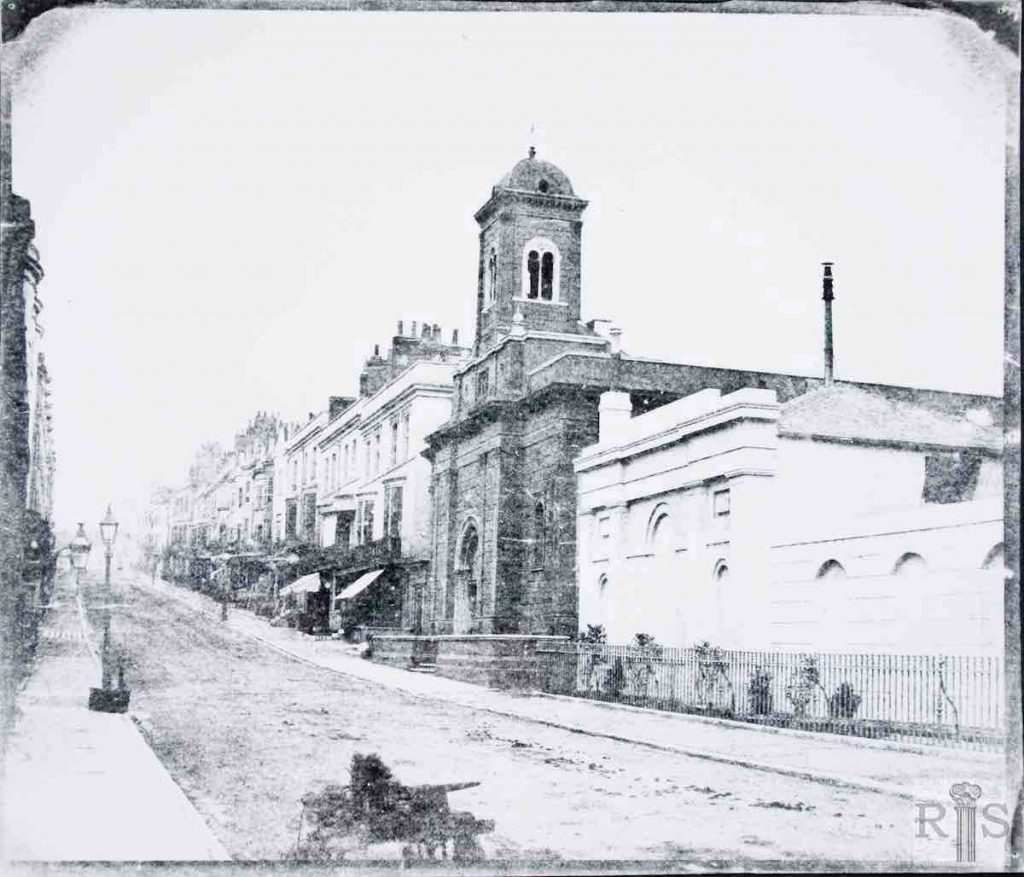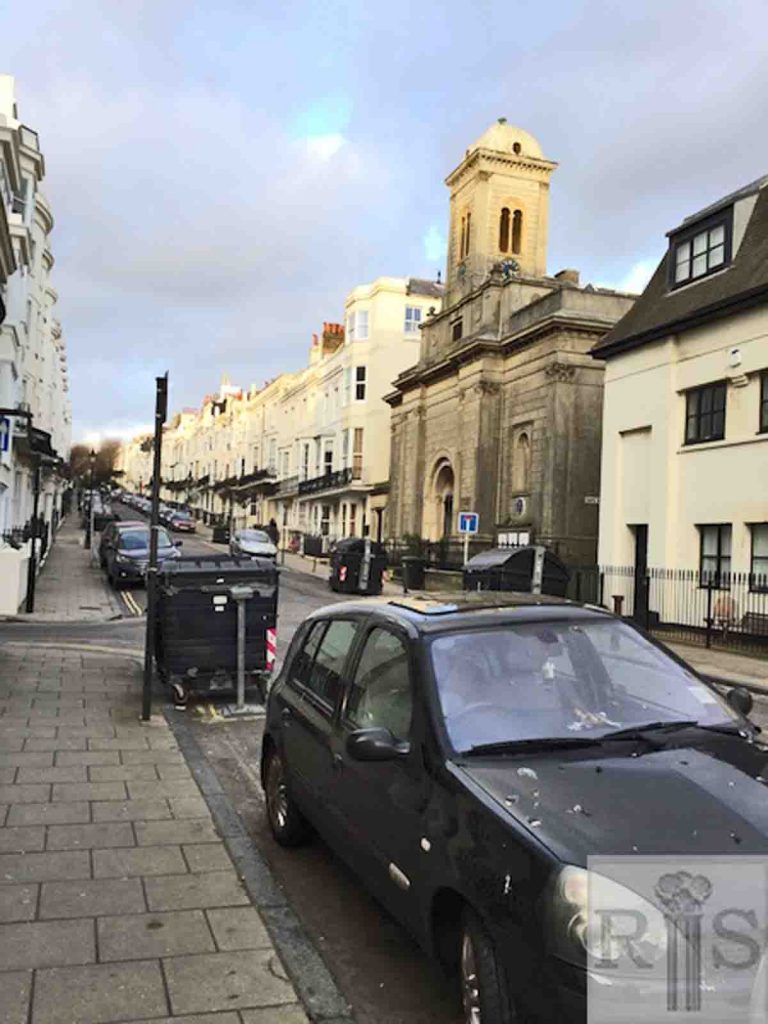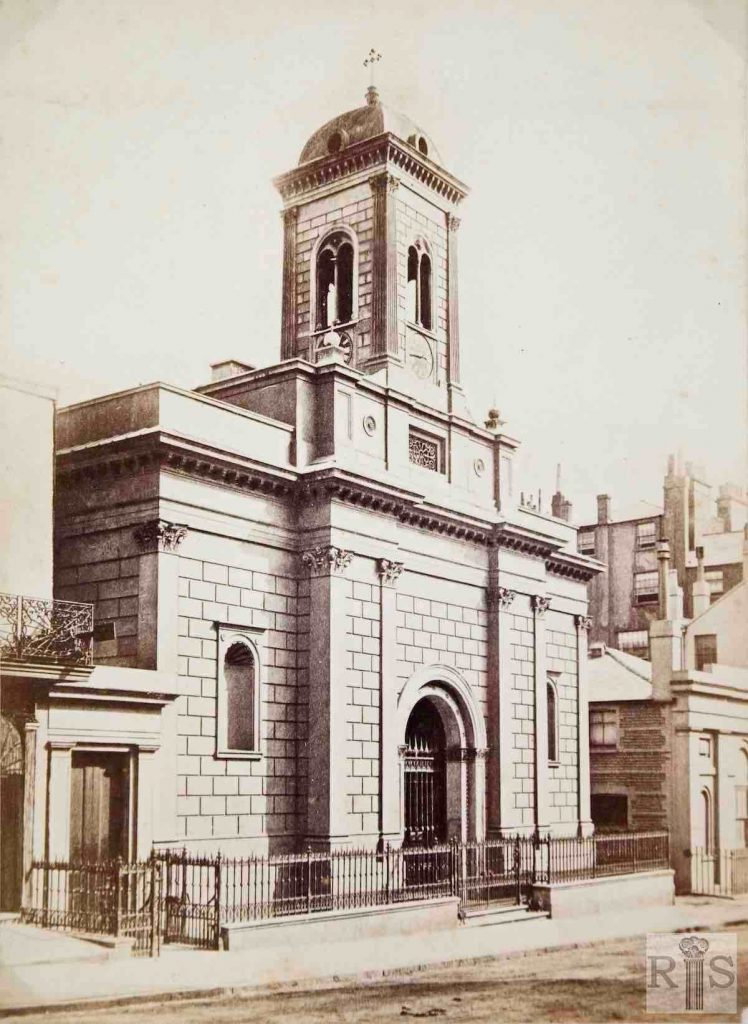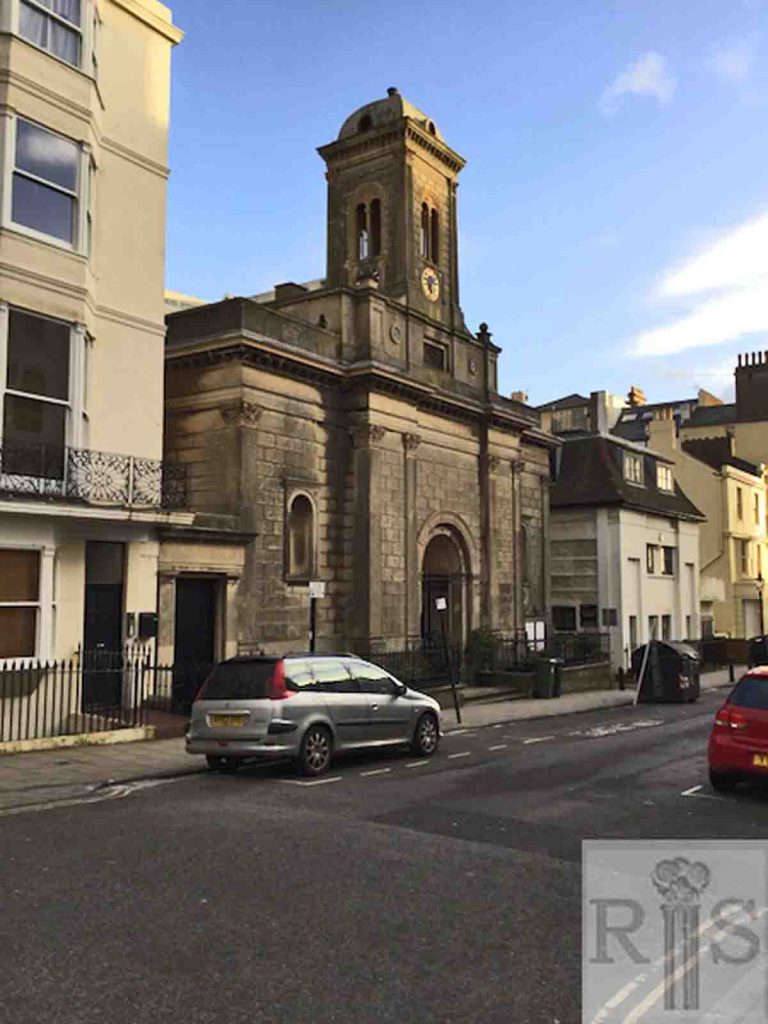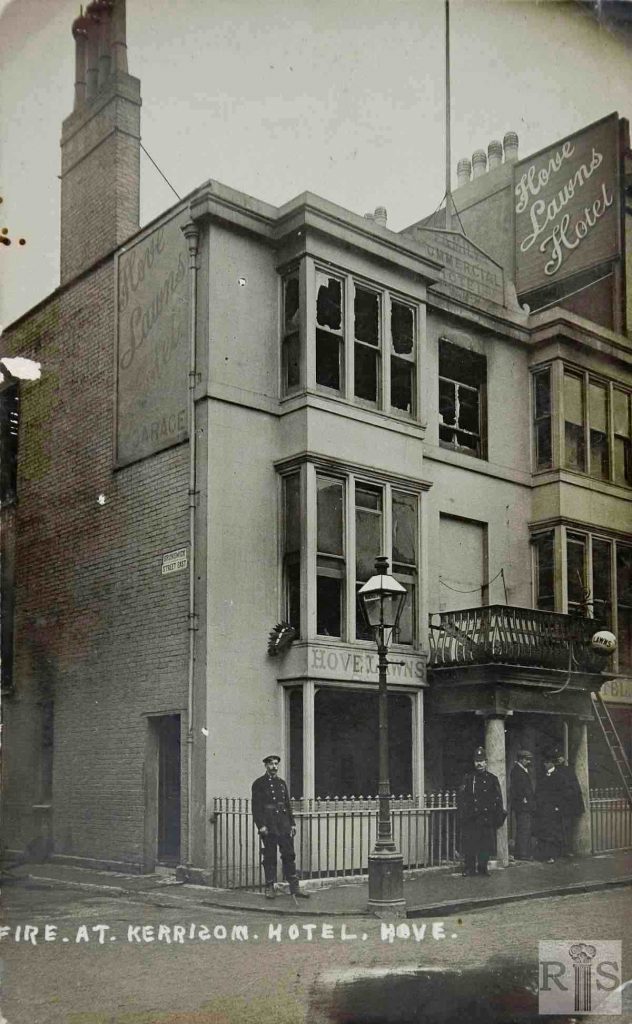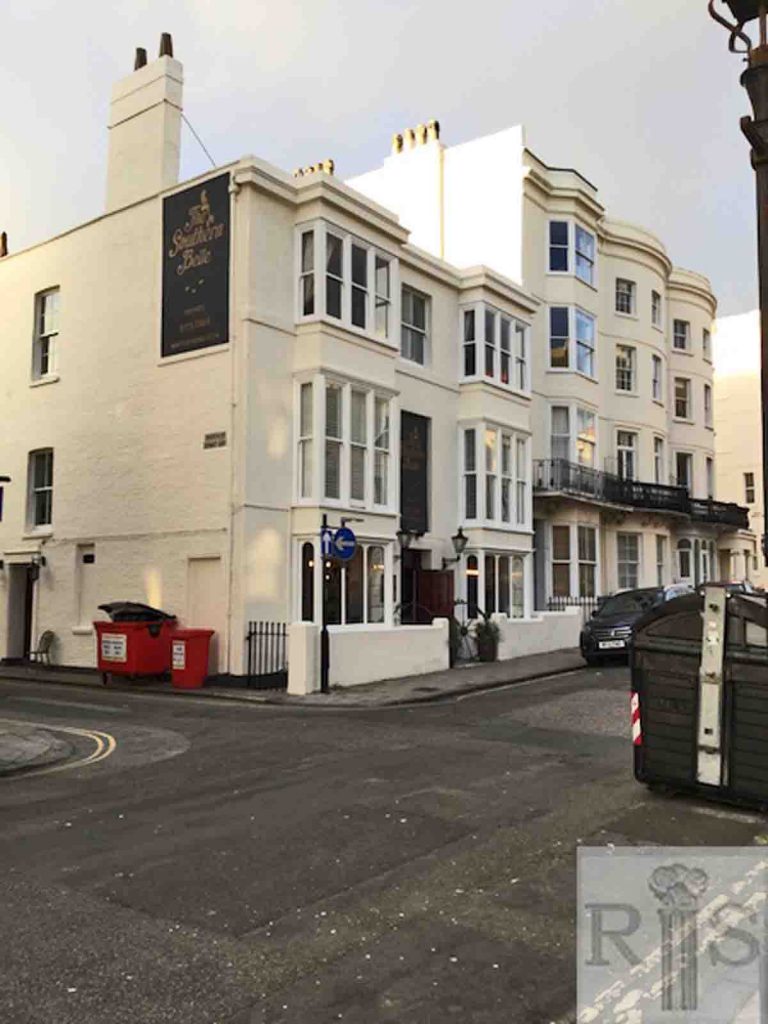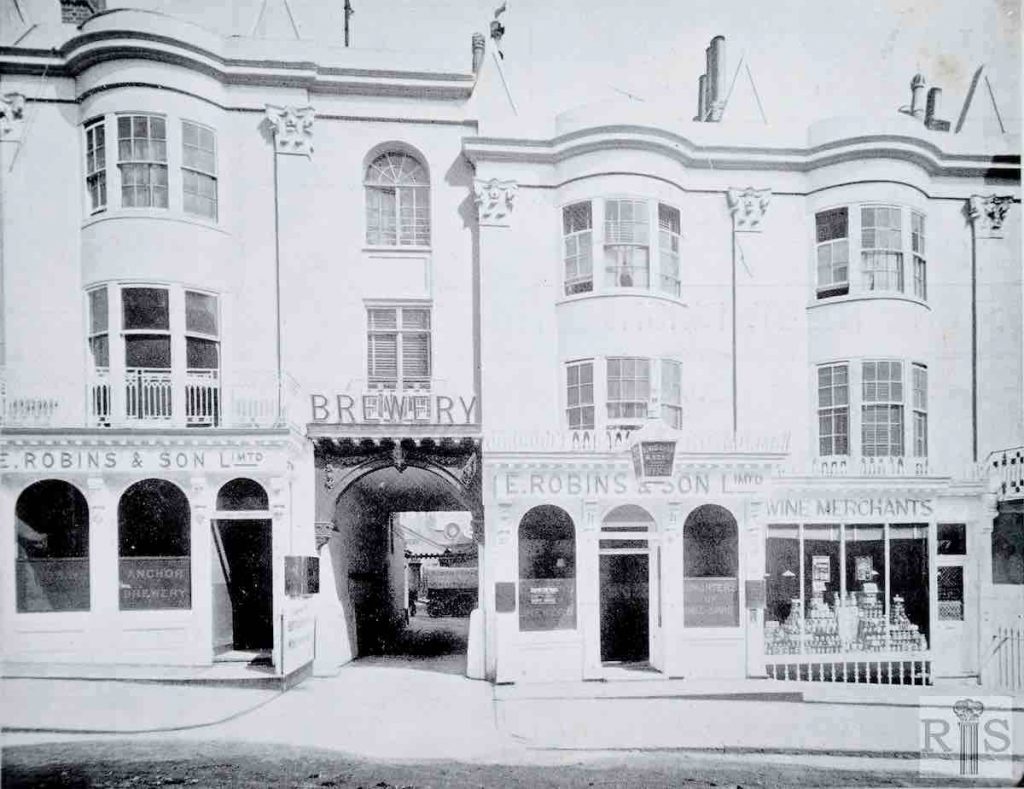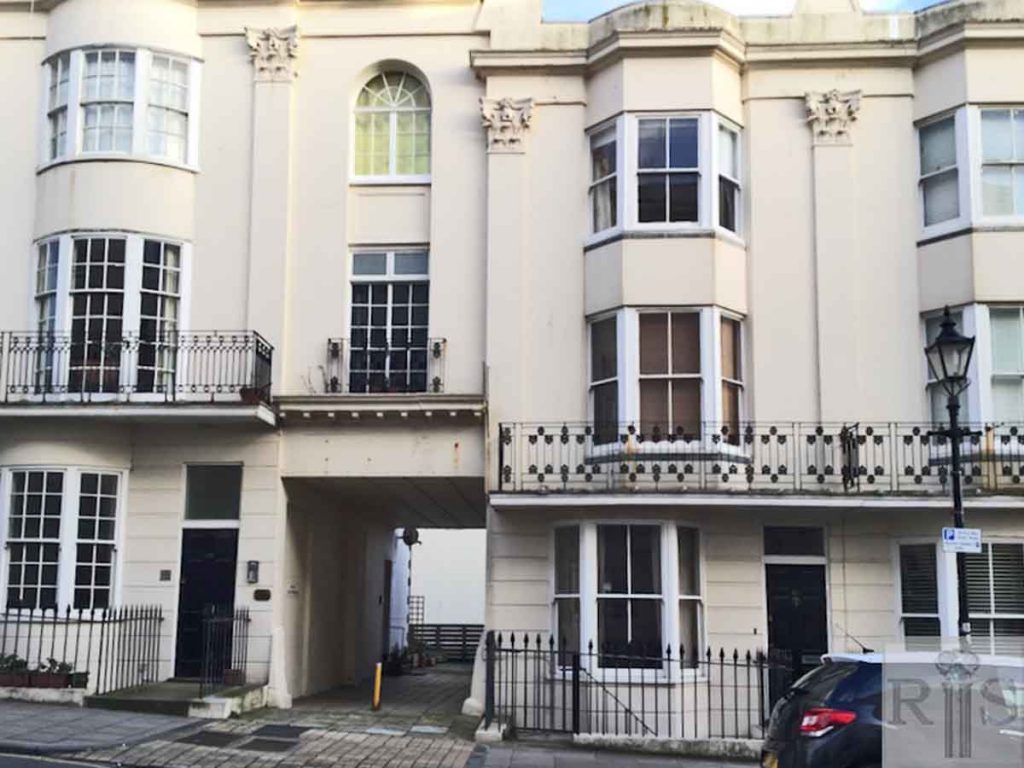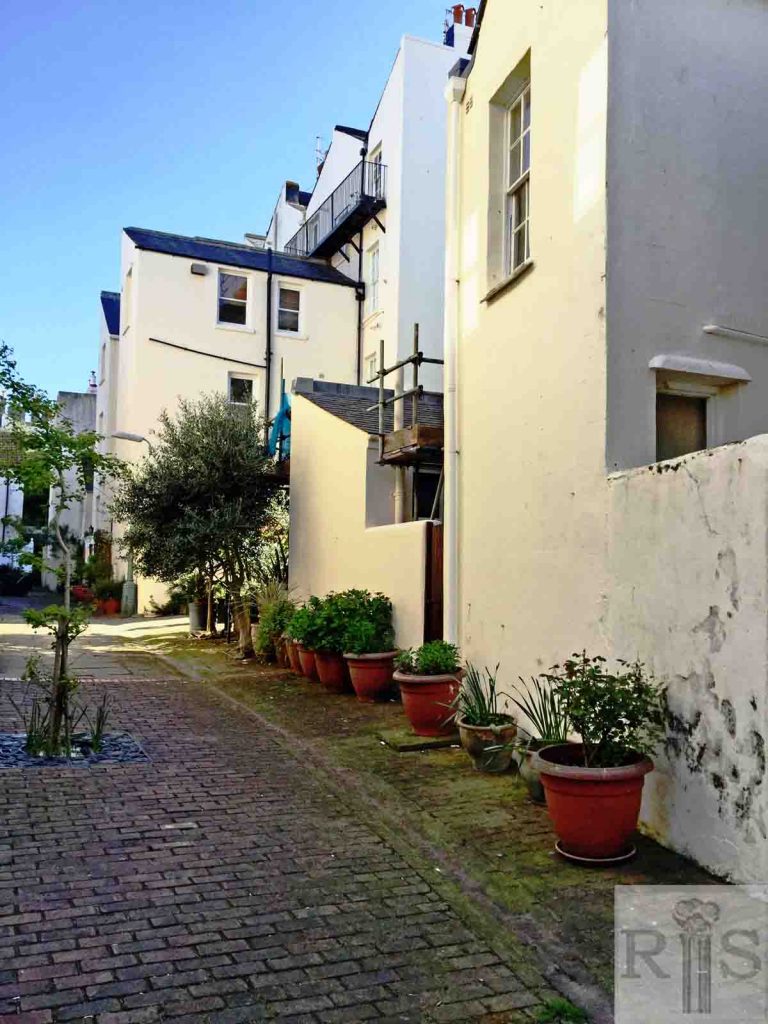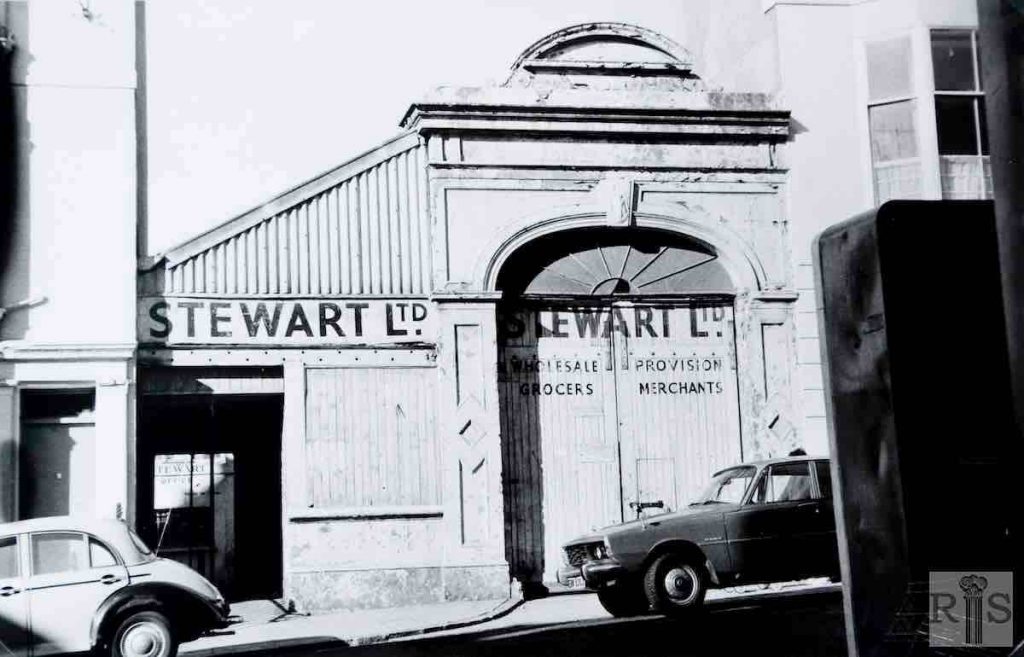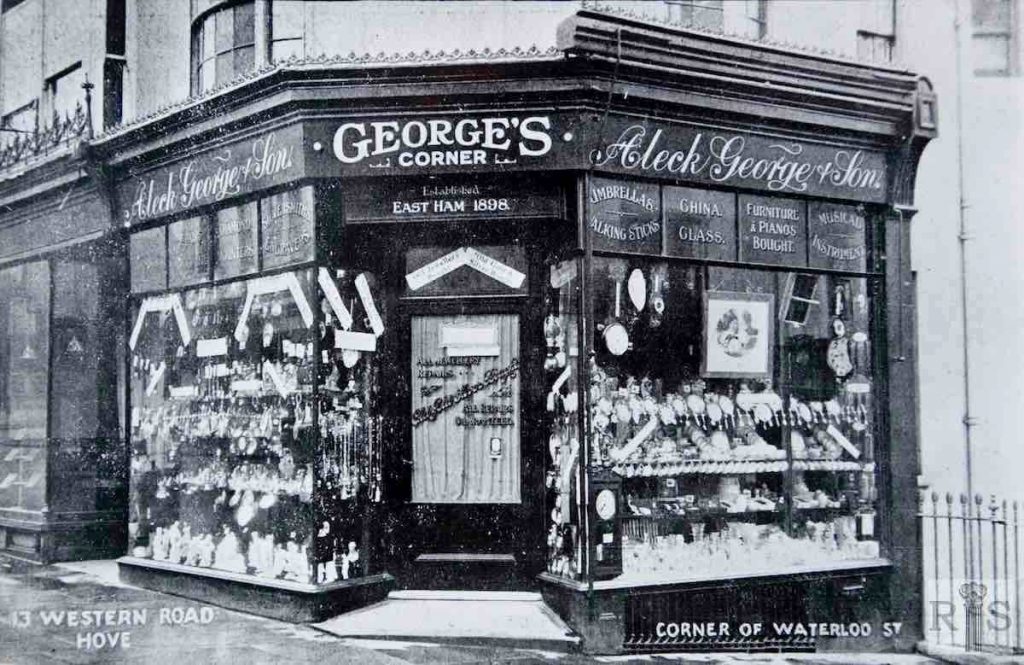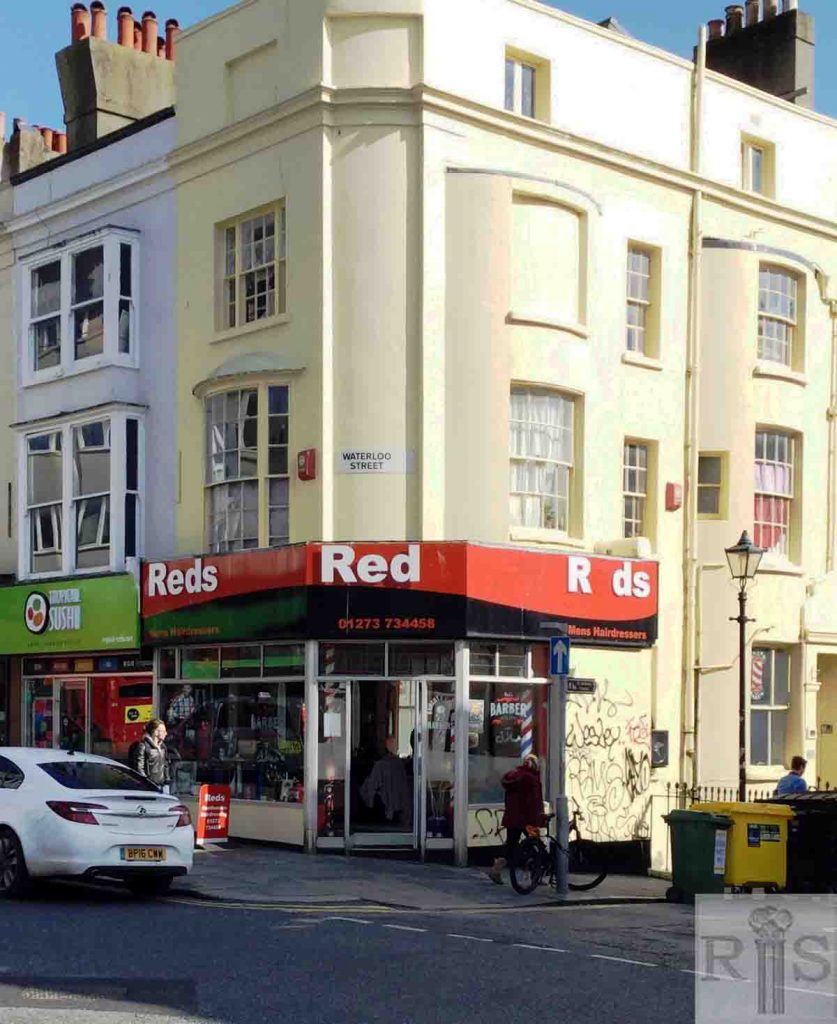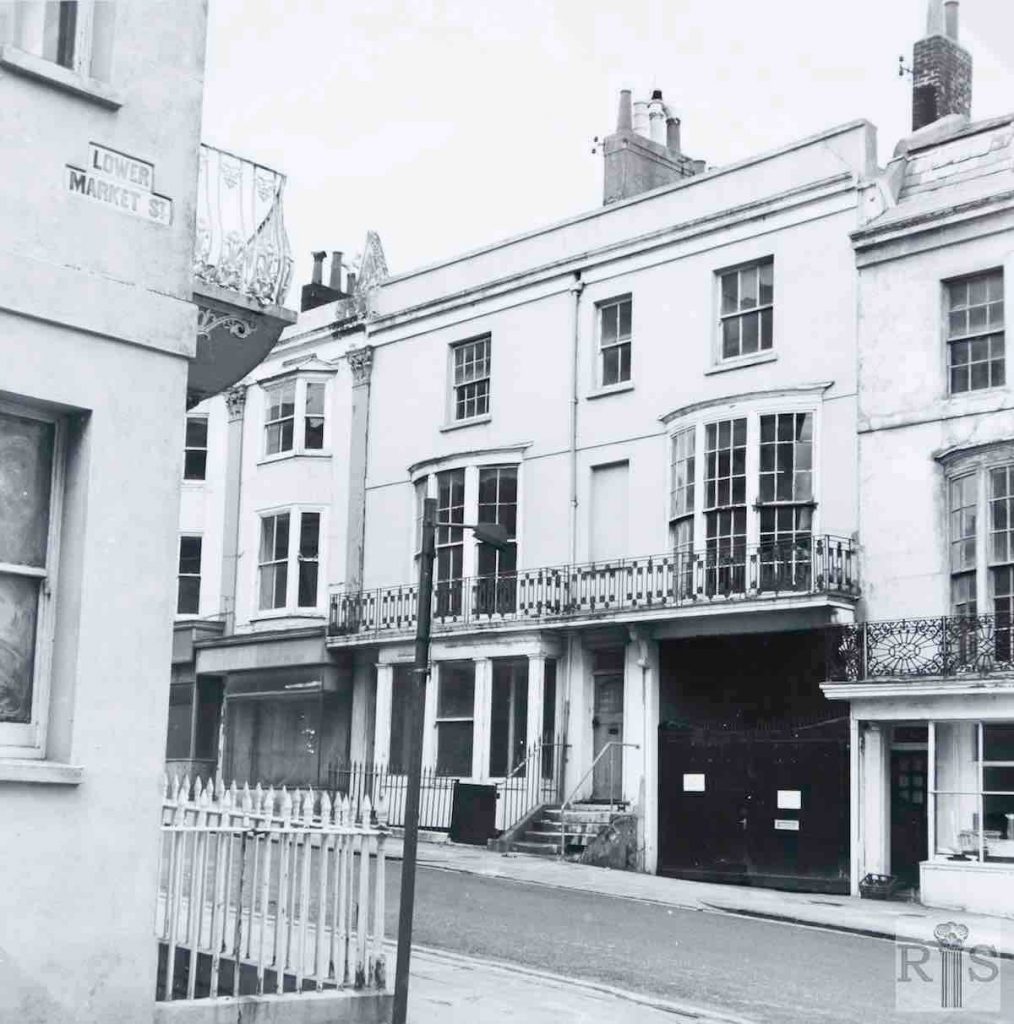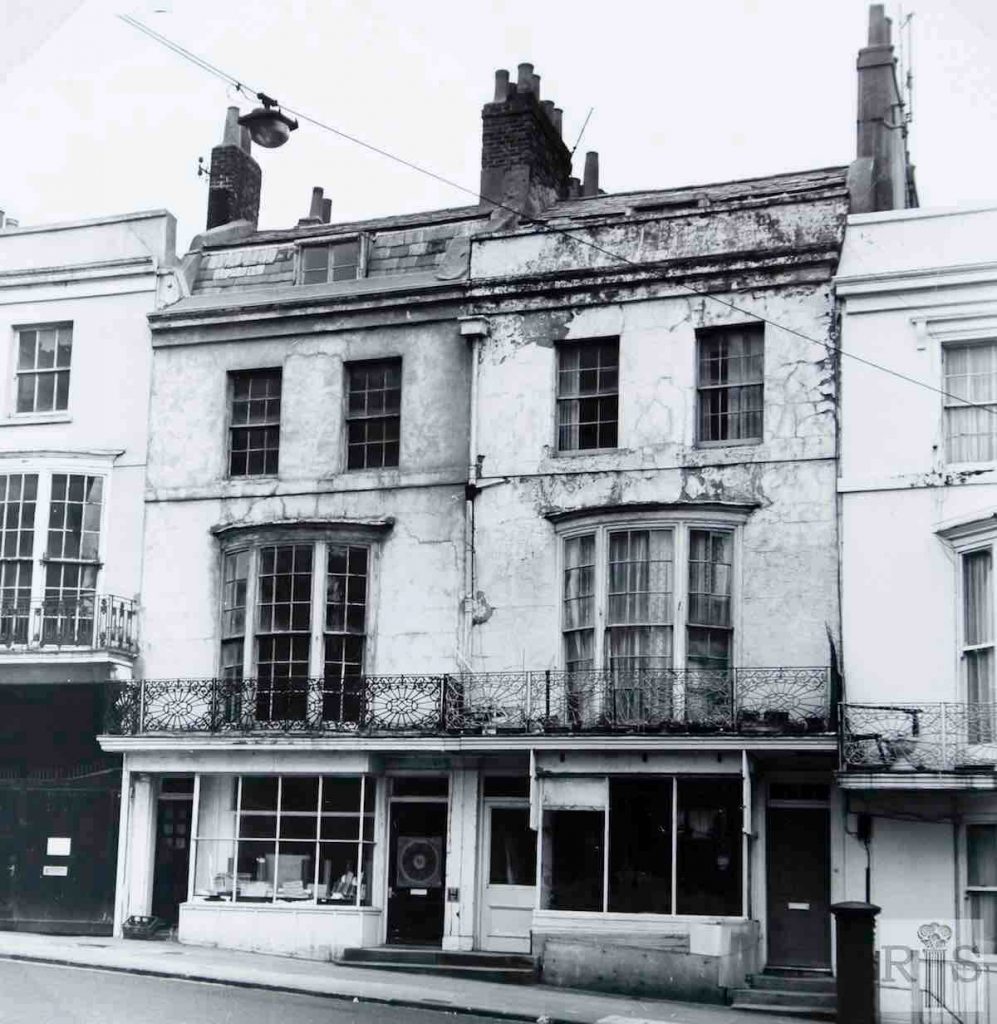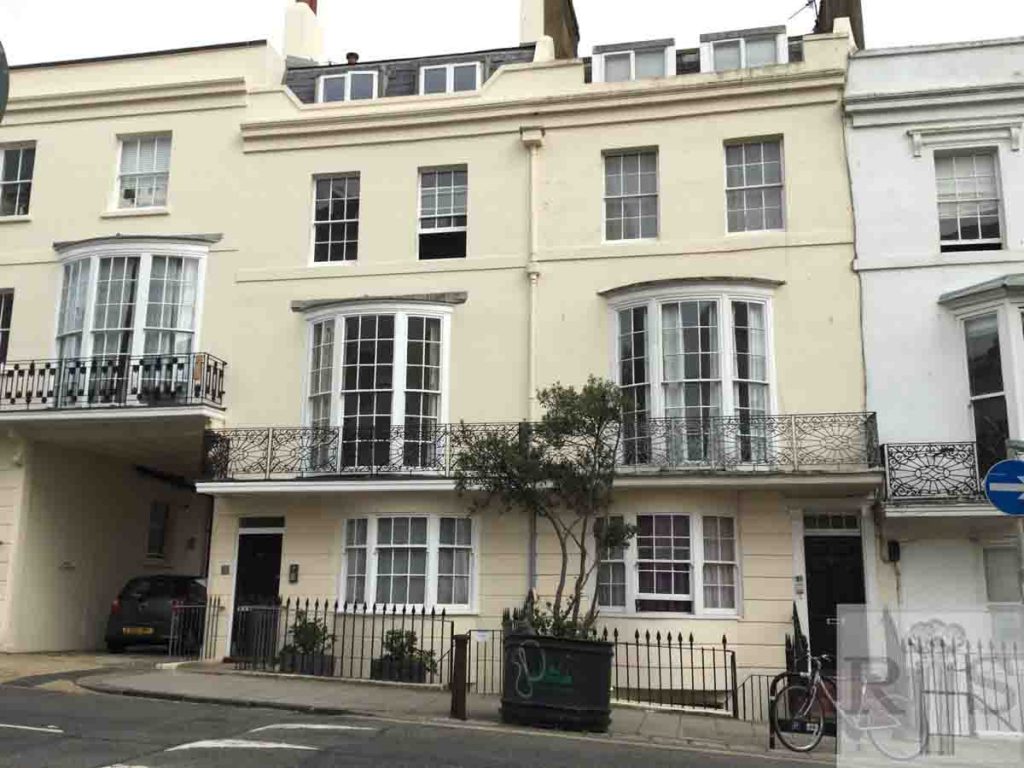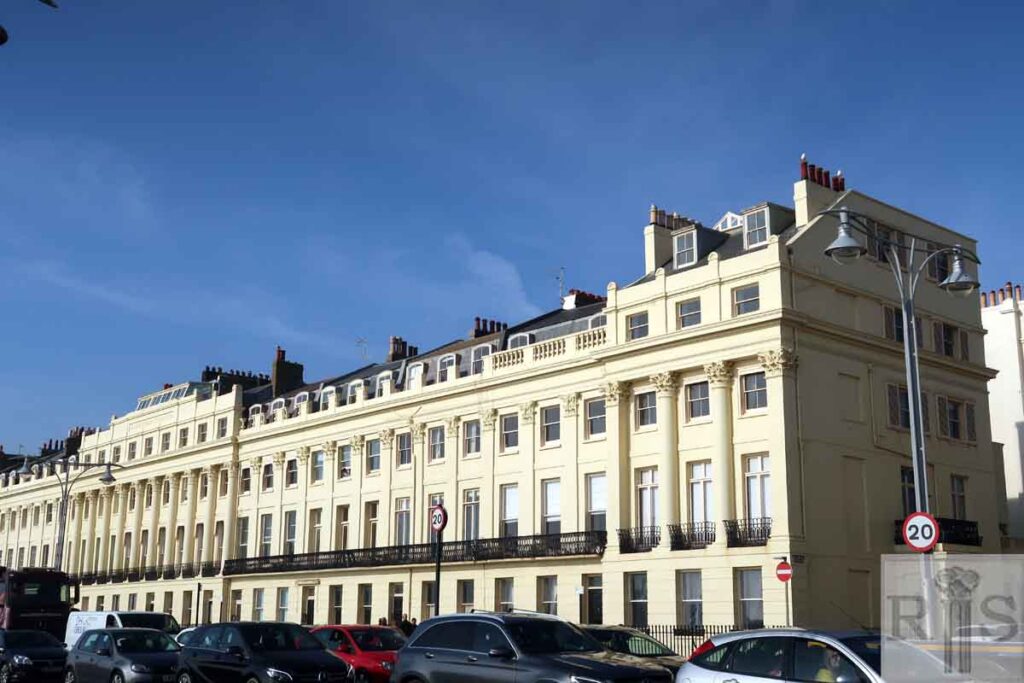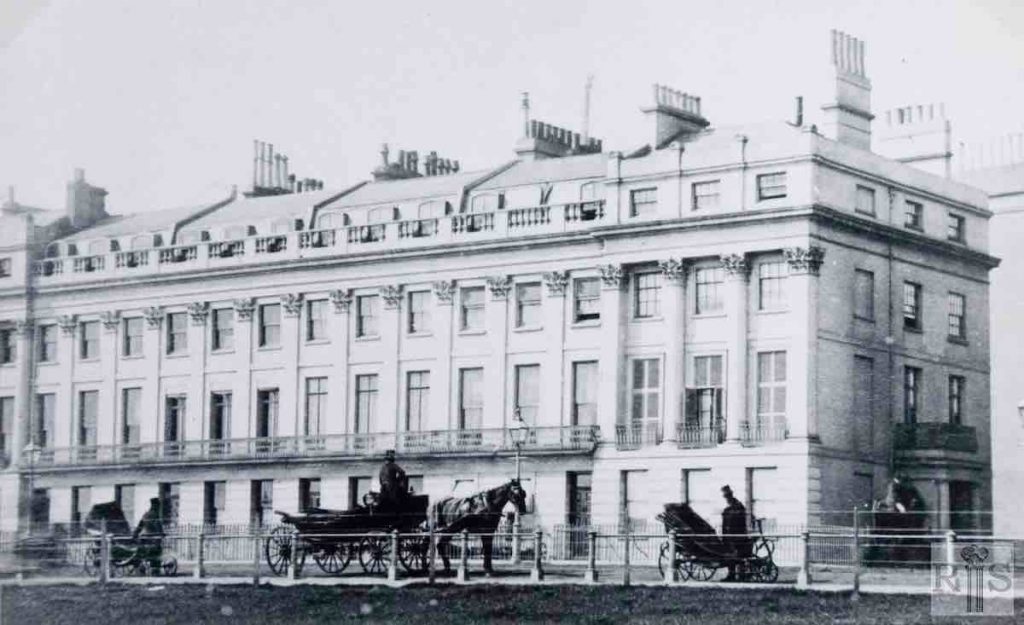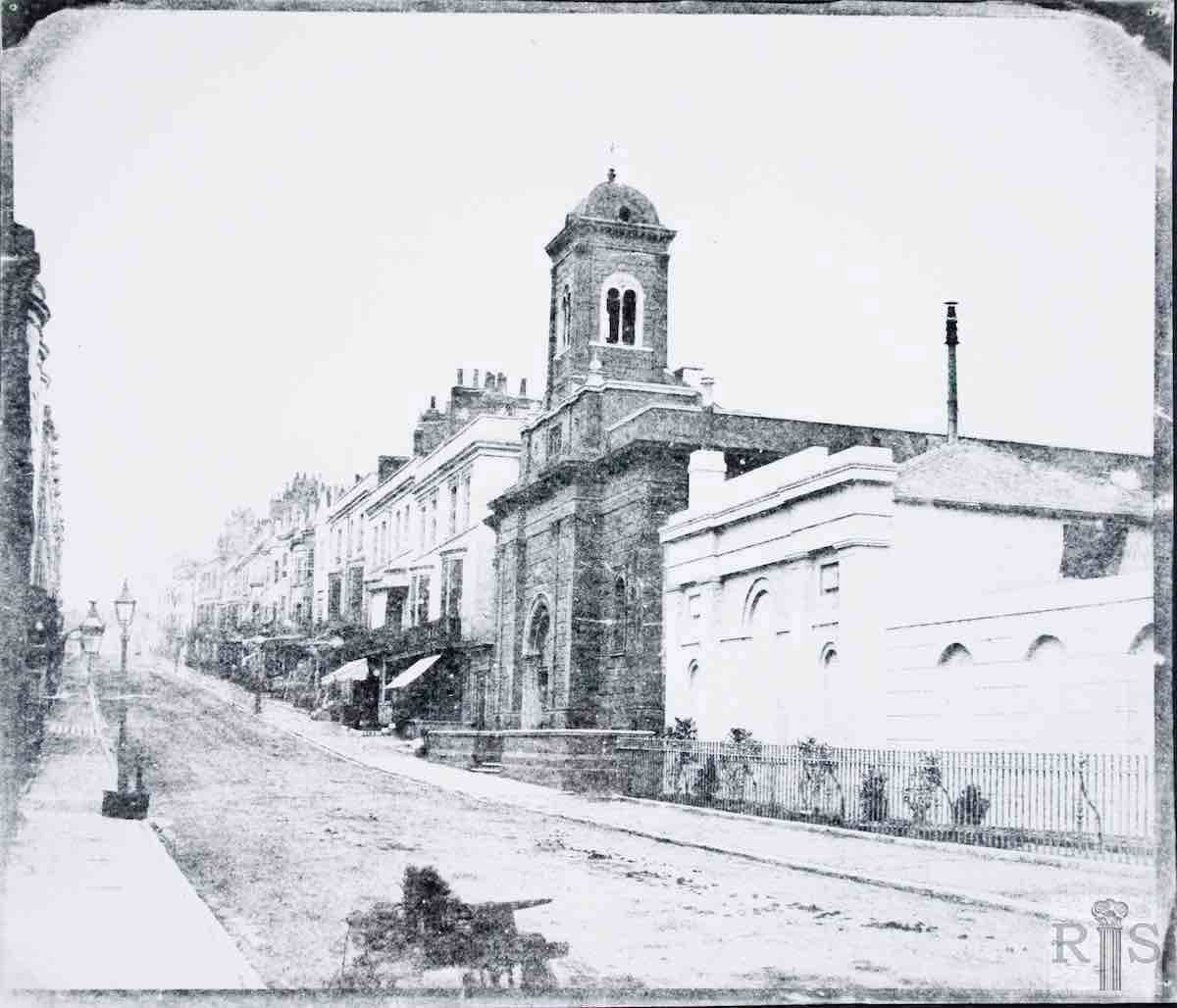
James Gray: A very early photograph of Waterloo Street, from a waxed paper negative, probably about 1860. Compare the shabby look of St Andrew’s Church, with its restored appearance in the later photograph below. Additional Information: © Phillipe Garner. jgc_11_007
2018: St Andrew’s Church was declared redundant in 1990 and is now in the care of the Churches Conservation Trust charity which protects and conserves historic churches. It is regularly used as a performance and exhibition venue. The exterior of the church is little changed. Waterloo Street, now largely residential, has lost the shop awnings, the ornate lamp post on the corner of Lower Market Street and Waterloo Street has survived. South of the church, the building numbered 67 and 68 Waterloo Street has been redeveloped and enlarged. (Photographer: Annie Drynan)
James Gray: The date of this photograph is uncertain but it was probably taken soon after the restoration of the church in 1869. Outwardly it has changed little to this day. Designed by Sir Charles Barry, the church was built in 1828, as a proprietary chapel at the expense of Rev. Edward Everard, then curate of St Margaret’s. jgc_11_010
James Gray: The interior of St Andrews Church. jgc_11_015
2018: St Andrew’s Church is still largely unchanged although it no longer has a cross on the top of the bell tower. This view shows the entrance to Chapel Mews, which runs along the south side of St Andrew’s. On the south corner of Chapel Mews is a building numbered 67 and 68 Waterloo Street which has had an extra storey added. (Photographer: Annie Drynan)
James Gray: For many years this was known as Kerrison Arms Inn, being named after Sir Edward Kerrison who lived at Wick House from 1818 to 1825. Like the church just opposite, it was built in 1828. The name was changed in 1907. Date of photograph unknown. Additional Information: Iron Duke, Fireman. jgc_11_011
2018: The James Gray picture may date from Christmas Eve 1907 when the building, only months earlier renamed The Hove Lawns Hotel, was widely reported to have caught fire. Its name was changed again, to The Iron Duke, in the 1970s and in 2017 from The Iron Duke to the Southern Belle. The balcony at the first floor level has now gone, as have the columns that supported it. The railings at street level have been replaced by a wall and the door at the corner with Brunswick Street East has been blocked. (Photographer: Annie Drynan)
James Gray: The offices and shop of Robins and Son in Waterloo Street, in 1900. Beyond the archway was the Anchor Brewery with another entrance from Golden Lane in Western Street. Mr E Robins founded the business about 1820 and during the last century he also had premises at 6 Marine Parade. Findlater, Makie & Co acquired the business in 1930. jgc_11_012
2018: These buildings (56, 57 and 58 Waterloo Street, either side of the archway) are now residential with bay windows replacing some original curved bow windows. The ground floor shopfronts have been replaced by windows, and area steps now give access to the basement accommodation. A balcony has been added to the first floor of Nos 57 and 58. The terrace running from Nos 48 to 64 on the east side of the street was Grade II listed in 1971.
James Gray: This photograph shows the exit to Upper Market Street at the rear. jgc_11_019
2018: This pedestrian path runs from Upper to Lower Market Street, with The Old Market arts venue to the west (not visible in this image). The large shed has been partly demolished and its original footprint is now part of a community garden. The line of the old lean-to roof in the original image is still followed in the wall and shed in the new image. (Photographer: Annie Drynan)
James Gray: When Brunswick Town was being developed in the late 1820s, a large market for all sorts of provisions was being built between Brunswick Square and Waterloo Street. Opened in August 1828, the entrance from Waterloo Street was through this archway, then bereft of all the dreadful additions of later years. The archway was still being used when the market closed and became Dupont’s Riding School. I do not know when the extensions were added, though the houses on either side were there from the start. Photographed on 21 October 1973, the archway was restored to its original appearance by Hove Council in 1986. Additional Information: Listed: Grade 2 jgc_11_018
James Gray: A shop at the corner of Western Road and Waterloo Street, at the turn of the century, showing a typical fully-stocked window display of that period.
Additional Information: Aleck George & Son, established in East Ham in 1898, George’s Corner. jgc_11_030
2018: This building at 13 Western Road is currently a barber’s shop. It still has many original features. The windows at first floor level and the cast iron railings at the top of Waterloo Street match the original image. (Photographer: Annie Drynan)
James Gray: I had these two photographs taken on 5 April 1981, because at that time there was a likelihood that a large area, known as the Golden Lane area, would be redeveloped. Although plans were agreed by the Planning Officers of both Brighton and Hove nothing came of it, probably due to the recession, and the buildings are still standing, many years later.
James Gray: Another view further up the street. jgc_11_017
2018: The current image shows buildings to the right (south) of the old southern entrance to the Anchor Brewery. These two houses, Nos 62 and 63, now have two windows at 3rd floor (roof) level, and their ground floor windows, apparently shop windows in 1981, are now 3-piece bay windows.
James Gray: This photograph was copied from a very old original, which probably dated from the 1870s. It shows the eastern end of the Terrace, at the corner of Waterloo Street. The corner house, with its entrance in Waterloo Street, is No 7. jgc_11_171
2020: The railing between Kingsway and Brunswick Lawns has gone. An additional storey has been added to the corner house. (Photographer: Helen Glass)
